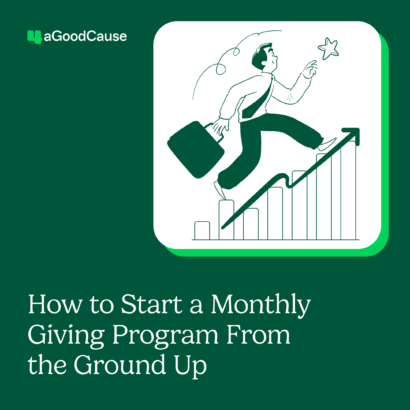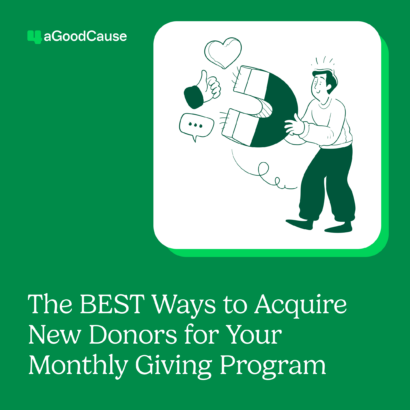When you hire a company, you look for testimonials, ratings or case studies to inform your decision in doing business with the company. Sometimes you may seek input from friends and family, and other times you may look through their digital channels and website to glean insights into what they do and who they help. Those stories, case studies and examples can go a long way to inform your trust and interest in reaching out.
The same holds true for your nonprofit.
Think of your nonprofit’s website as a place to showcase stories—to humanize what you do and whom you serve—as case studies to inform prospective donors and volunteers about the importance of giving and getting involved.
How to write effective nonprofit stories
There is power in storytelling. Every day we hear, read and tell stories. It is how we connect with those around us. In the past, we’ve shared how to gather stories of impact and how the story of one can be effective in fundraising efforts. When collecting ideas for and writing stories for your website, consider the following:
- Who has recently been impacted by your services?
- Are you able to interview those impacted by your services and if so, what format would work best? A guest post? A Q&A article? A quick, 5-sentence blurb on the home page?
- What are the top 5 questions you get asked about your nonprofit’s services? How can you turn those into stories?
- What inspired you to start working for your organization? How can that translate into a story?
Keep your stories conversational, casual and easy-to-follow. Remember, you want to engage the reader, pull them in and make it easy for them to follow along. Skip the jargon. Simple does the trick. Add to the copy by pulling in
- Pictures
- Quotes and testimonial callouts
- Video
- Audio recordings
- Graphs
In addition to the multi-media components mentioned above, you may have the ability to sync up live webcams for those in the environmental, nature or animal space much like the Monterey Bay Aquarium does on its site.
Where to showcase stories on your website
Your entire website should paint the story of your nonprofit, but there are some key areas where it makes sense to focus on more stories over others.
Home page
We love how CultureWorks debuts a story front and center on its home page. It’s visual, it grabs attention and it makes us want to click to read more. Typically, your home page will see the highest amount of traffic than any other page on your website. Use that to highlight amazing stories throughout the year.
Voices, stories or impact pages
You can absolutely create a page on your website dedicated solely to sharing your stories. May nonprofits take this approach including Fight Colorectal Cancer, WaterAid and Special Olympics New Jersey.
Program pages
Many nonprofits have multiple programs that in turn impact various populations. Create stories that line up with each of your organization’s programs to showcase the impact in all areas of your nonprofit.
Donation page
While we recommend keeping your donation pages short and to the point, there can be areas where it makes sense to add in quotes or testimonials or provide a visual that continues to tie in the human aspects of your nonprofit’s brand and the importance of giving.
Blog
Blogs, like this one from Inter-Faith Food Shuttle, are great areas on your site to showcase news, events and stories. In fact, make it a point to conduct interviews throughout the year and connect with additional team members to gather ideas for populating human-centric stories on your blog year-round.
Story highlights may also change on your website’s home page or other key areas depending on the time of year or if you’re in the middle of a specific campaign. Always think through how you can utilize the best real estate on your website to showcase stories at different times throughout the year.
Pivot from story to ask
Not every story on your website warrants an ask; decide the right balance of storytelling-to-donation-requests ratio that works for your nonprofit. Examples may include:
Blog post
If you’re regularly publishing human stories on your blog, you don’t want all of them to request donations at the end, but some of them certainly can and should. Use a blog content calendar to plan which stories and articles throughout the year will have strong CTAs to donate and which ones can remain a softer ‘sell’.
Audio recording or podcast
Add a call-to-action or quick how-to-donate blurb at the end of these pieces of audio content.
Home page spotlights
Use callouts and imagery to pull in the reader. Actionable CTAs such as “Learn how your gift can bring X number of backpacks to students in New Orleans” with a link to your donation page.
Think about what makes you give. What interested you in working for your amazing nonprofit. Translate that into human stories that appeal to donors—that showcase the importance of what you’re doing and how, with their help, you can continue to make a difference in the lives of others for years to come. It’s all about the story.



